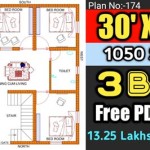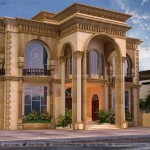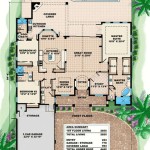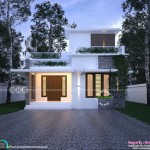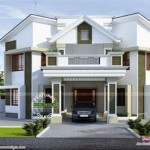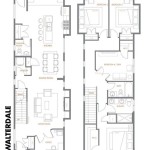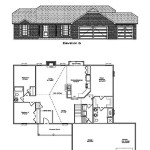House Floor Plan Design: Tailoring Your Own Living Space
Designing a house floor plan is a multifaceted process requiring careful consideration of various factors, from lifestyle and budget to site conditions and building codes. Creating a custom floor plan offers a distinct advantage: the ability to tailor the home precisely to individual needs and preferences. This personalized approach departs from pre-designed plans, providing the opportunity to optimize space, functionality, and aesthetics for a truly unique dwelling.
The process of designing one’s own house floor plan begins with a thorough assessment of lifestyle requirements. This involves identifying the number of bedrooms and bathrooms needed, the desired size and configuration of living areas, and any specific needs such as a home office, gym, or studio. Understanding how the home will be used on a daily basis is crucial in determining the ideal layout. For instance, a family that enjoys cooking and entertaining might prioritize a large, open-plan kitchen and dining area, while someone who works from home might require a dedicated and quiet office space.
Budget constraints are a significant factor in determining the scope and complexity of the floor plan. It is essential to establish a realistic budget early in the process and to remain mindful of costs throughout the design phase. Factors such as the size of the house, the complexity of the roofline, and the materials used will all impact the overall cost. Consulting with a builder or contractor early on can help to establish a realistic budget and identify potential cost-saving opportunities.
The design process also necessitates an understanding of the building site. The orientation of the site, the prevailing winds, and the amount of sunlight it receives will all influence the placement of rooms and the design of windows and doors. For example, orienting living areas towards the south can maximize solar gain in colder climates, while strategically placing windows can capture breezes and promote natural ventilation. The slope of the land and any existing trees or other features will also need to be considered. A site survey can provide valuable information about the topography and soil conditions, which can impact the foundation design and other aspects of the building process.
Adherence to local building codes and regulations is paramount. These codes are in place to ensure the safety and structural integrity of the building, as well as to protect the health and well-being of its occupants. Building codes typically address aspects such as fire safety, accessibility, energy efficiency, and plumbing. It is essential to familiarize oneself with the relevant building codes and to ensure that the floor plan complies with all applicable requirements. Consulting with a qualified architect or building designer can help to navigate the complexities of building codes and to ensure that the design meets all necessary standards.
Key Considerations in House Floor Plan Design
Designing a functional and aesthetically pleasing house floor plan requires careful attention to several key considerations. These include the flow of traffic, the use of natural light, and the integration of indoor and outdoor spaces.
Traffic Flow:
The arrangement of rooms should facilitate easy and natural movement throughout the house. Pathways should be clear and unobstructed, and rooms should be positioned logically in relation to one another. For example, the kitchen should be located near the dining area, and bedrooms should be situated away from noisy areas of the house. Consideration should also be given to the placement of stairs, hallways, and entryways to ensure that they are easily accessible and well-lit. Avoiding bottlenecks and creating clear sightlines can improve the overall functionality and livability of the home.
Natural Light:
Maximizing the use of natural light can significantly enhance the ambiance and comfort of a home. Large windows and skylights can bring natural light into interior spaces, reducing the need for artificial lighting and creating a brighter and more inviting atmosphere. The orientation of the house should be considered in relation to the sun's path, and windows should be strategically placed to capture sunlight throughout the day. Light wells and interior courtyards can also be used to bring natural light into rooms that are located in the center of the house. Controlling the amount of sunlight that enters the house is also important, especially in hot climates. Overhangs, awnings, and window coverings can be used to shade windows and prevent overheating.
Indoor-Outdoor Integration:
Seamlessly integrating indoor and outdoor spaces can extend the living area and create a stronger connection with nature. This can be achieved through the use of large sliding doors, patios, decks, and outdoor kitchens. Creating a visual connection between indoor and outdoor spaces can also enhance the sense of spaciousness and openness. Landscaping can be used to create a natural transition between the house and the surrounding environment. Planting trees and shrubs can provide shade, privacy, and visual interest. Water features, such as fountains and ponds, can add a sense of tranquility and relaxation.Essential Elements of a House Floor Plan
A well-designed house floor plan typically incorporates several essential elements, including a functional kitchen, comfortable bedrooms, and versatile living spaces. These elements should be carefully planned and integrated to create a harmonious and livable home.
Kitchen Design:
The kitchen is often considered the heart of the home, and its design should reflect the needs and preferences of the occupants. A functional kitchen should have an efficient layout, with the major appliances (refrigerator, stove, and sink) arranged in a logical order. The work triangle, which connects these three elements, should be compact and unobstructed. Ample counter space and storage are essential for food preparation and storage. The kitchen should also be well-ventilated to remove cooking odors and steam. Consider incorporating features such as a kitchen island, a breakfast bar, or a walk-in pantry to enhance functionality and convenience. The style and finishes of the kitchen should be consistent with the overall design of the house.
Bedroom Comfort:
Bedrooms should be designed as comfortable and private retreats. The size of the bedrooms should be adequate to accommodate furniture such as beds, dressers, and nightstands. A closet or wardrobe is essential for storing clothes and personal belongings. Bedrooms should be located away from noisy areas of the house to ensure a peaceful and restful environment. The windows should be positioned to allow for natural light and ventilation. Consider incorporating features such as a walk-in closet, an ensuite bathroom, or a private balcony to enhance the comfort and luxury of the bedrooms. The master bedroom should be designed as a spacious and private sanctuary, with ample closet space and a luxurious bathroom.
Living Space Versatility:
Living spaces should be designed to be versatile and adaptable to different activities. The living room, dining room, and family room should be arranged in a way that allows for both formal and informal gatherings. Open-plan layouts can create a sense of spaciousness and connectivity, while separate rooms can provide privacy and a more traditional feel. Consider incorporating features such as a fireplace, a built-in entertainment center, or a reading nook to enhance the functionality and comfort of the living spaces. The furniture should be arranged in a way that promotes conversation and relaxation. The lighting should be adjustable to create different moods and atmospheres. The overall design of the living spaces should reflect the lifestyle and preferences of the occupants.Tools and Resources for Designing Your Own Floor Plan
Numerous tools and resources are available to aid in the process of designing a house floor plan. These range from simple pen-and-paper sketches to sophisticated computer-aided design (CAD) software. Choosing the right tools and resources can significantly streamline the design process and ensure that the final plan meets all requirements.
Pen and Paper:
The most basic tool for designing a floor plan is pen and paper. Sketching out ideas and experimenting with different layouts can be a helpful way to visualize the space and identify potential problems. Graph paper can be used to create accurate scale drawings. While pen and paper are simple and readily accessible, they lack the precision and flexibility of digital tools.
Online Floor Plan Software:
Several online floor plan software programs are available, offering a user-friendly interface and a range of features. These programs allow users to create 2D and 3D floor plans, add furniture and fixtures, and experiment with different colors and materials. Some online floor plan software programs are free to use, while others require a subscription. These programs can be a valuable tool for visualizing the space and making design decisions, but they may not be suitable for creating detailed architectural drawings.
CAD Software:
Computer-aided design (CAD) software is a more advanced tool for creating detailed architectural drawings. CAD programs offer a high degree of precision and control, allowing users to create complex floor plans, elevations, and sections. CAD software is typically used by architects and building designers, and it requires a significant investment in time and training to master. However, CAD software can be a powerful tool for creating professional-quality floor plans.
Architectural Design Services:
Engaging the services of a qualified architect or building designer can provide valuable expertise and guidance throughout the design process. Architects and building designers have the knowledge and experience to create functional, aesthetically pleasing, and code-compliant floor plans. They can also help to navigate the complexities of building codes and regulations and to ensure that the design meets all necessary standards. While hiring an architect or building designer can be a significant investment, it can also save time and money in the long run by preventing costly mistakes and ensuring that the project is completed successfully.
Design Your Own Home House Designing Homes

Make Your Own Blueprint How To Draw Floor Plans

3d Home Design Architect For Your Own House Free Planner Homify

Impressive Make Your Own House Plans 1 Design Floor Free Home

Make Your Own Blueprint How To Draw Floor Plans Drawing House Sketch Plan Blueprints

Make Your Own Floor Plans

From Sketch To Reality How Design A House You Ll Love

House Plans How To Design Your Home Plan

Boxbrownie Com Using Floor Plans To Your Property

Create Your Own Floor Plans House Design Interior Plan Programs

